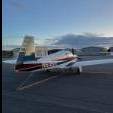Crosswind component in short bodies
-
Members Online
- jamesm
- pkellercfii
- Wrench978
- exM20K
- Schllc
- N201MKTurbo
- milotron
- LANCECASPER
- toto
- GeeBee
- gabez
- Red Leader
- MikeOH
- icurnmedic
- 1980Mooney
- TCC
- M20TN_Driver
- philiplane
- Steve Dawson
- Nico1
- eman1200
- Peter T
- Ned Gravel
- McMooney
- boboxa9895
- Guy123
- Bolter
- Scottknoll
- Ragsf15e
- AJ88V
- jamesyql
- alextstone
- rwabdu
- jrwilson
- Anthony_T
- hammdo


Recommended Posts
Join the conversation
You can post now and register later. If you have an account, sign in now to post with your account.